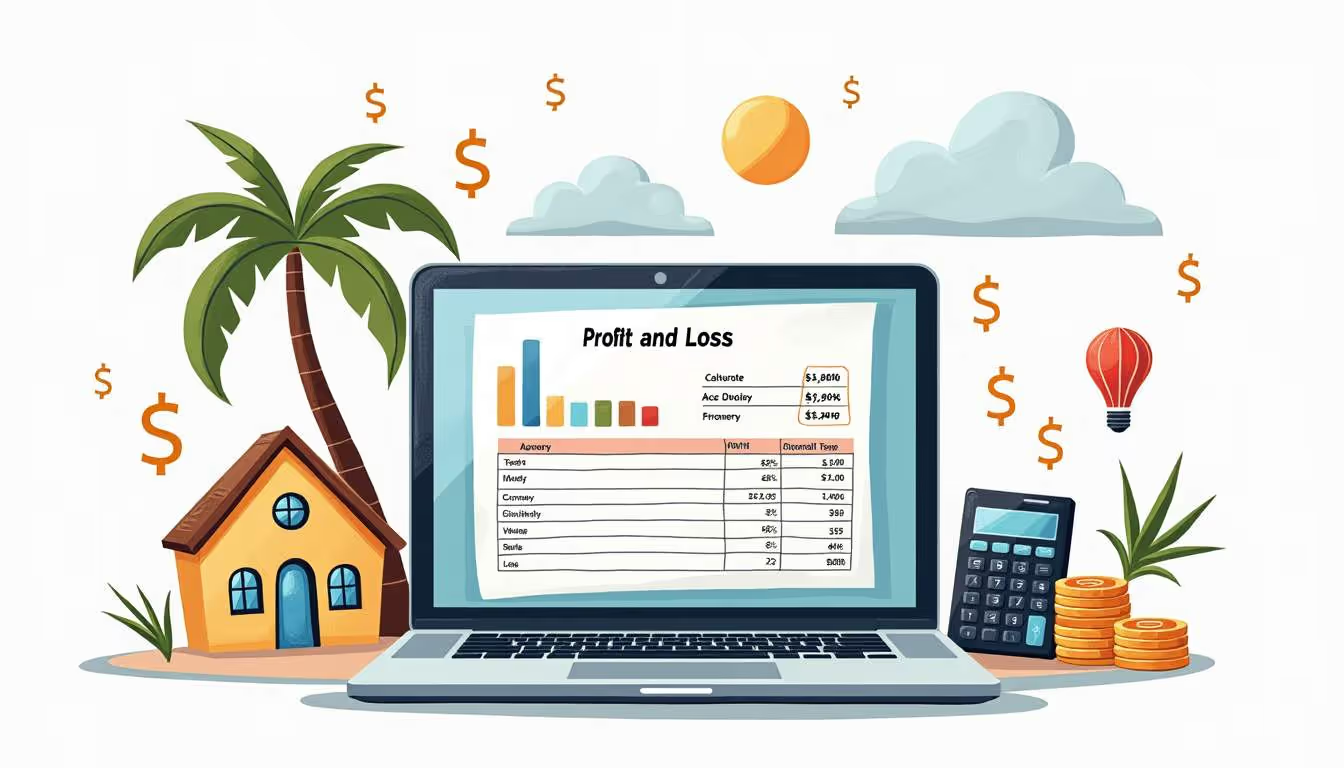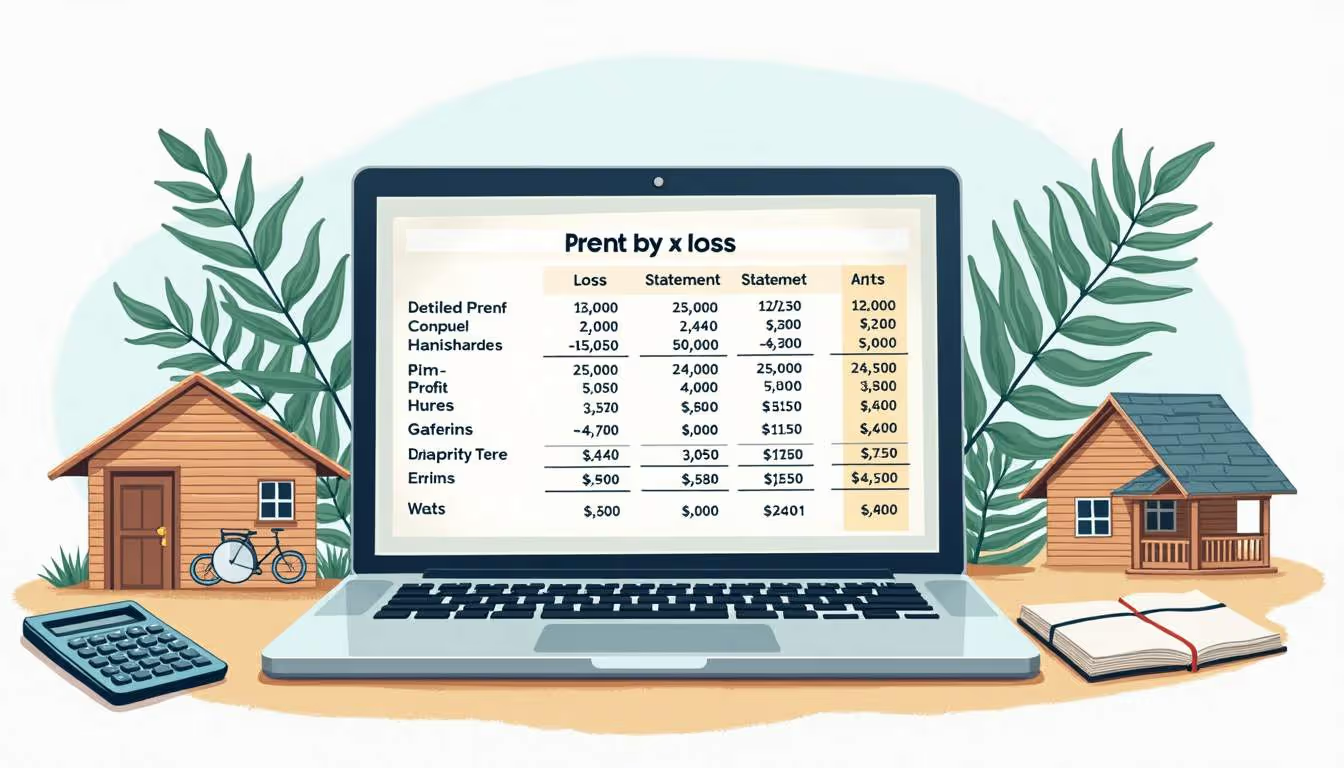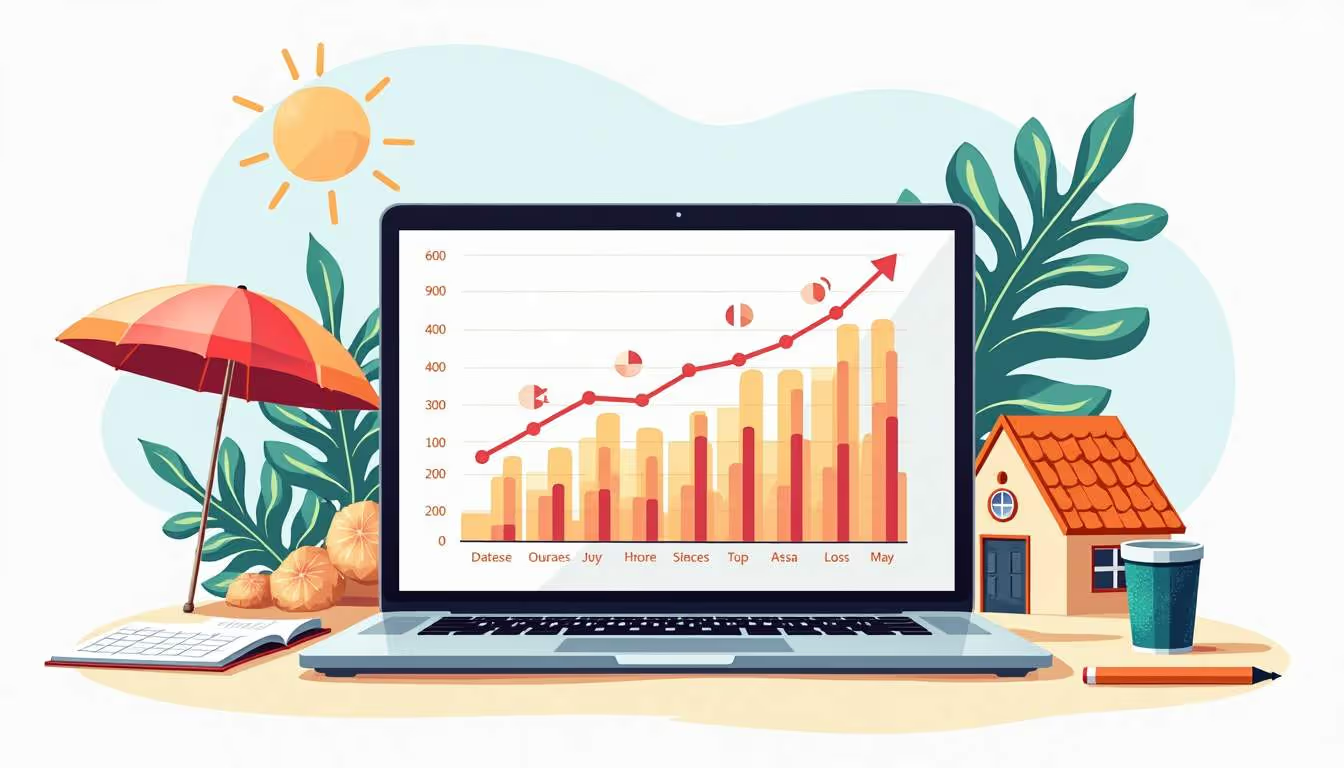How to Generate Profit and Loss Statements for Vacation Rental Homes
Owning a vacation rental home can be a lucrative endeavor, yet it involves navigating through various financial intricacies. A key element in managing a successful rental property is comprehending its financial performance via profit and loss statements (P&L). These statements offer a detailed view of a property's profitability, empowering owners to make strategic decisions. This article will walk you through the steps of creating P&L statements for vacation rental homes.
Decoding Profit and Loss Statements
A profit and loss statement is a comprehensive financial report that outlines the revenues, costs, and expenses over a specific timeframe. For vacation rental proprietors, this document is vital for evaluating the financial well-being of their property. It usually encompasses income from rental operations, operating expenses, and other pertinent financial information.

Significance of P&L Statements
Profit and loss statements are crucial for several reasons. They enable owners to monitor their income and expenses, evaluate profitability, and make informed decisions regarding pricing, marketing, and property management. Furthermore, these statements are often necessary for tax purposes and can be advantageous when applying for loans or attracting investors. By routinely examining their P&L statements, owners can detect trends over time, such as peak rental periods or unforeseen expenses, allowing them to adjust their strategies accordingly. This proactive approach not only bolsters financial stability but also deepens understanding of rental market dynamics.
Essential Elements of a P&L Statement
To effectively create a P&L statement, it’s crucial to grasp its essential components. The main sections include:
Besides these core elements, it’s also advantageous to track supplementary income sources, such as collaborations with local businesses for tours or discounts, which can enhance the overall revenue picture. Moreover, understanding seasonal variations in both revenue and expenses can help owners prepare for cash flow fluctuations, enabling them to allocate resources more effectively. By analyzing these details, vacation rental owners can not only boost their operational efficiency but also enhance guest experiences, leading to higher occupancy rates and repeat bookings.
Collecting Financial Data
Before creating a P&L statement, it’s essential to gather all necessary financial data. This step ensures that the statement is accurate and reflective of the property's performance. A well-prepared P&L statement not only serves as a financial snapshot but also aids in strategic decision-making for future investments and operational adjustments.
Tracking Income Sources
For vacation rental homes, income can be derived from various sources. The primary source is typically the rental income, but additional revenue streams may include:
Accurately documenting these income sources will provide a comprehensive view of total revenue. Utilizing property management software can simplify this process by automating income tracking and reporting. Additionally, consider exploring seasonal pricing strategies or promotional discounts to maximize occupancy rates and enhance overall revenue. Keeping track of special events in the area can also help you capitalize on peak rental times, ensuring that your property remains competitive in the market.
Documenting Expenses
Expenses can vary significantly depending on the property and its location. Common operating expenses include:
Maintaining detailed records of these expenses is crucial. Consider using spreadsheets or accounting software to categorize and track expenses throughout the year. This practice will make it easier to compile data when creating the P&L statement. Additionally, regular reviews of your expenses can help identify areas where you might cut costs or negotiate better rates with service providers. For instance, bulk purchasing supplies or switching to energy-efficient appliances can lead to significant savings over time, ultimately impacting your bottom line positively.
Crafting the Profit and Loss Statement
Once all financial data is collected, it’s time to craft the profit and loss statement. This process can be done manually or with the help of software tools designed for financial reporting.
Manual Creation of P&L Statement
To manually create a P&L statement, follow these steps:
Utilizing Accounting Software
For those who prefer a more automated approach, accounting software can streamline the process of generating P&L statements. Many platforms offer templates specifically designed for rental properties, allowing users to input their financial data easily.
Popular accounting tools also provide additional features such as:
Moreover, these software solutions often come equipped with analytical tools that can help property owners identify trends over time. By analyzing historical data, users can make informed decisions about future investments or adjustments in their rental pricing strategies. This capability is particularly valuable in a fluctuating market, where understanding the financial landscape can lead to more strategic planning.
Additionally, many accounting software options offer cloud-based services, enabling users to access their financial information from anywhere at any time. This flexibility is crucial for property managers who may need to review their financials while on the go or during meetings with stakeholders. With robust security measures in place, users can feel confident that their sensitive financial data is protected while still being readily accessible.
Interpreting the Profit and Loss Statement
Creating a P&L statement is just the beginning; interpreting the results is equally important. Understanding the financial performance of a vacation rental home can lead to better decision-making. By delving into the intricacies of income and expenditure, property owners can uncover insights that not only reflect past performance but also shape future strategies. This analysis is a vital tool for ensuring that the property remains competitive and profitable in a dynamic market.

Spotting Trends
Reviewing P&L statements over multiple periods can help identify trends in revenue and expenses. Look for patterns in occupancy rates, seasonal fluctuations, and changes in operating costs. This information can guide future pricing strategies and marketing efforts. For instance, if data reveals that occupancy rates peak during summer months, property owners can leverage this insight to implement targeted promotions or adjust pricing to maximize revenue during high-demand periods. Additionally, understanding the timing of maintenance costs can help in budgeting and planning for necessary repairs without impacting cash flow.
Assessing Profitability
Evaluating profitability involves comparing net profit margins to industry standards. A healthy profit margin indicates that the property is performing well, while a low margin may signal the need for cost-cutting measures or increased marketing efforts. Furthermore, analyzing the components of revenue—such as nightly rates, cleaning fees, and additional services—can reveal opportunities for enhancement. For example, offering unique amenities or experiences can justify higher pricing, thus improving overall profitability. It is also crucial to consider the impact of external factors, such as local events or economic conditions, which can influence both occupancy and pricing strategies.
Refining Strategies Based on Insights
Once the P&L statement has been analyzed, it's time to make adjustments to improve financial performance. Here are some strategies to consider:

Optimizing Pricing
Adjusting rental rates based on market demand and occupancy trends can significantly impact profitability. Consider implementing dynamic pricing strategies that fluctuate based on seasonality and local events to maximize revenue.
Cutting Operating Expenses
Identifying areas where expenses can be trimmed is crucial for improving net profit. This might involve negotiating better rates with service providers, reducing utility costs through energy-efficient upgrades, or streamlining property management practices.
Tax Considerations of Profit and Loss Statements
Understanding the tax implications of profit and loss statements is essential for vacation rental owners. The net profit or loss reported on the P&L statement directly affects tax obligations.
Reporting Income and Expenses
Rental income must be reported on tax returns, and the expenses documented in the P&L statement can often be deducted. This includes costs related to property management, maintenance, and even depreciation. Keeping accurate records ensures that deductions are maximized, reducing overall tax liability.
Consulting with a Tax Professional
Given the complexities of tax laws related to rental properties, consulting with a tax professional is advisable. They can provide guidance on maximizing deductions and ensuring compliance with tax regulations.
Conclusion
Generating profit and loss statements for vacation rental homes is a vital practice that can lead to improved financial management and decision-making. By understanding the components of a P&L statement, gathering accurate financial data, and analyzing the results, property owners can gain valuable insights into their rental business. Whether done manually or through accounting software, the process of creating and analyzing these statements is essential for achieving long-term success in the vacation rental market.
Ultimately, a well-maintained P&L statement not only reflects the current financial health of a vacation rental home but also serves as a roadmap for future growth and profitability. By leveraging the insights gained from these statements, owners can make informed decisions that enhance their investment and ensure a successful rental experience for both themselves and their guests.
Ready to streamline your vacation rental accounting and gain precise financial insights? VRPlatform is your go-to solution for automating profit and loss statements and ensuring trust accounting compliance. With features like seamless PMS integration, detailed owner and manager statements, and a dedicated owner portal, VRP empowers property managers, accountants, and property owners alike. Embrace the ease of automated calculations and transparent financial reporting with VRPlatform. Sign up for a free trial today and take the first step towards optimized financial management and long-term success in the vacation rental market.



